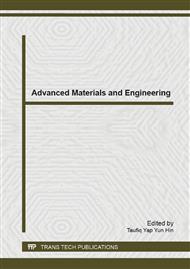p.319
p.324
p.328
p.338
p.342
p.347
p.353
p.359
p.363
Migration Study of Biodegradable Blends of Polylactic Acid and Epoxidized Natural Rubber
Abstract:
Nowadays the use of biodegradable plastic in the food industry has increased dramatically. Because of its outstanding characteristics, i.e. environmental friendliness and non-toxicity, researchers are interested in studying how to improve the properties of plastic, especially polylactic acid or PLA, which is very fragile and intolerant to high impact force. Attempts have been made to improve the weak points of PLA by mixing PLA with epoxidized natural rubber. The natural rubber goes through an epoxidation process, resulting in epoxidized natural rubber (ENR) as the finished product. ENR contains epoxy groups which can efficiently react with PLA. Ratios of PLA and ENR employed in this study were 50:50, 60:40, 70:30, 80:20 and 90:10. In addition to finding a suitable ratio between PLA and ENR, the mixtures were subjected to migration tests according to the guidelines specified in European Commission Regulation (EU) No 10/2011 in order to prove whether the mixed materials are safe and suitable for consumer use. Migration testing was conducted by soaking samples in four different food simulants – 10% (v/v) ethanol in aqueous solution, 3% (w/v) acetic acid in aqueous solution, 20% (v/v) ethanol in aqueous solution and vegetable oil – for 24 h at 40 °C. The results showed that the PLA/ENR blends at every ratio had an overall migration amount of less than 10 mg/dm2 in three of the sample simulants, while the overall migration from materials soaked in vegetable oil exceeded this standard. Migration tests of one of the sample blends conducted at 100 °C for 2 h showed similar results. In conclusion, polymer blends of PLA and ENR are appropriate for food packaging applications, but are not appropriate for foods containing vegetable oil.
Info:
Periodical:
Pages:
342-346
Citation:
Online since:
June 2014
Authors:
Price:
Сopyright:
© 2014 Trans Tech Publications Ltd. All Rights Reserved
Share:
Citation:


